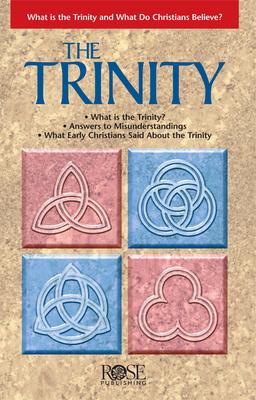How To Explain the Trinity: The Trinity Defined
The Trinity is one of the great mysteries of the Faith. Defining the Trinity is both simple and complex: God is One, yet God exists in 3 Persons: Father, Son and Holy Spirit. It is a biblical concept that goes beyond the human understanding. This Trinity pamphlet gives a basic explanation and definition of this important Christian belief.
This Trinity booklet includes--
- A clear easy-to-understand definition of the Trinity doctrine
- The 60 Scriptures used to support the belief that the Father, Son, and Holy Spirit are all God, not three names for the same Person.
- Chart comparing the power and attributes of the 3 Persons of the Trinity
- Chart Comparing the "Unique" Traits of God and Jesus
Christian Beliefs and Church History Explained in the Trinity Pamphlet
The Trinity pamphlet helps believers know what they believe and why they believe this critical Christian doctrine. In 12-panels of rich, well-research information, the pamphlet addresses topics such as-
- What Christians believe about the Trinity: The Father is God, Jesus Is God, The Holy Spirit is God
- The Trinity and the Bible
- Misunderstandings about the Trinity
- How early Christians dealt with misunderstandings about the Trinity
- The Trinity in the early Church and the Creeds
- Important Trinitarian Bible verses and references
- More than 60 New Testament Bible passages mention the three Persons of the Trinity together.
- Theophilus, sixth bishop of Antioch, Syria, is the first person known to have used the word "Trinity" in his work, Refutation of Autolycus (AD 168).
- More than a half-dozen writers prior to the 4th Century defended the doctrine of the Trinity. (The Trinity Pamphlet gives a list of names and dates.)
It's probably not surprising that a doctrine that's as critical as the Trinity is at the center of numerous misunderstandings. The Trinity pamphlet addresses six of the most common Trinity misunderstandings.
The Christian Creeds and the Trinity
The Trinity pamphlet reveals how early Christians addressed these misunderstandings through some of the earliest statements of faith
- The Apostles' Creed written in the second century, and the Trinity
- The Nicene Creed AD 325, and the Trinity
- Athanasian Creed written c. AD 400, and the Trinity
- Chalcedoian Creed written in AD 451, and the Trinity
